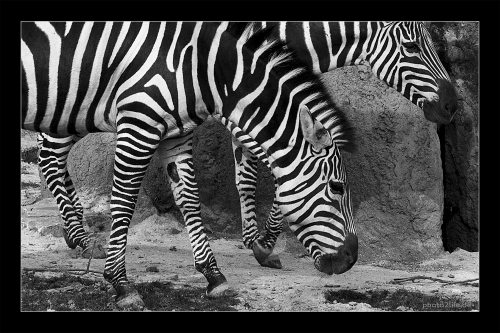
Wild ass
Zebras are African equids best known for their distinctive white and black stripes. Their stripes come in different patterns unique to each individual. They are generally social animals and can be seen in small harems to large herds. Zebras are generally 2.3 m (8ft) long, stand 1.25-1.5 m (4-5ft) at the shoulder, and weigh around 300 kg (660 lbs), although some can grow to more than 410 kg (900 lbs). In addition to their stripes, zebras have erect, mohawk-like manes. Unlike their closest relatives, horses and donkeys, zebras have never been truly domesticated.
There are three species of zebra: the Plains Zebra, Grevy's Zebra and the Mountain Zebra. The Plains zebra and the Mountain Zebra belong to the subgenus Hippotigris, but Grevy's zebra is the sole species of subgenus Dolichohippus. The latter resembles an ass while the former two are more horse-like. Nevertheless, DNA and molecular data show that zebras do indeed have monophyletic origins. All three belong to the genus Equus along with other living equids. In certain regions of Kenya, Plains zebras and Grevy's zebras coexist.
The unique stripes and behaviors of zebras make these among the most familiar animals to people. They can be found in a variety of habitats, such as grasslands, savannas, woodlands, thorny scrublands, mountains and coastal hills. However, various anthropogenic factors have severely impacted zebra populations, in particular hunting for skins and habitat destruction. Grevy's zebra and the Mountain zebra are endangered. While Plains zebras are much more plentiful, one subspecies, the quagga, went extinct in the late nineteenth century.
The name "zebra" comes from the Old Portuguese word zevra which means "wild ass".
